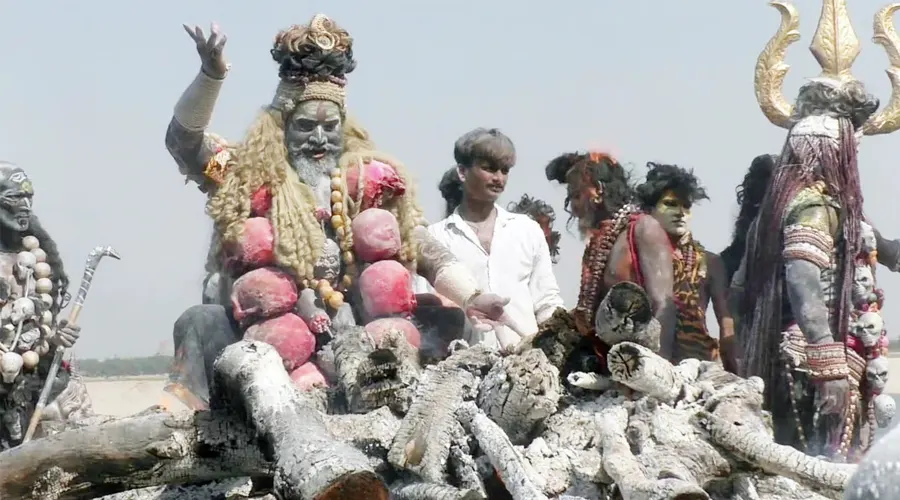Masan Holi Varanasi 2024: When Shiva Plays Holi With Pyre Ashes In Varanasi
Masan Holi, a celebration mostly observed among Shiva devotees using pyre ashes in the Manikarnika ghat in Varanasi has caught the attention of a lot of people.
As Holi approaches, various Indian states have begun celebrating the festival according to their unique traditions and cultures. In Uttar Pradesh's Varanasi, a large group of people gathered at the Manikarnika Ghat to observe the tradition of 'Masan Holi'. This tradition involves playing Holi with ashes from the pyre, creating a distinctive and memorable experience.
Masan Holi at Varanasi
A day after Rangbhari Ekadashi, the Shiva Devotees of Varanasi are all jubilant as they follow a different and unique tradition of Masan or Bhasma Holi.
Keeping the oldest culture with themselves the Shiva devotees play Bhasma Holi using pyre ashes in the Manikarnika ghat in Varanasi. This is the city’s oldest tradition of celebrating death in the hope of attaining ‘Moksha’ (Salvation).
Masan Holi is the center of attraction in the oldest city of Banaras. The Holi brings a large number of people to the Ghats to perform this age-old playing Holi with ashes from the pyres, creating a distinctive and memorable experience.
Before playing Holi with ash the devotees offer prayer to the Mahashamshan Nath or Baba Masan Nath, the lord of the cremation ground.
The midday aarti of Baba Mahashamshan Nath and Mata Mashan Kali is performed near the ghat, followed by the presentation of pyre ashes and Gulal to Baba and Mata. Baba Masan Nath is also offered liquor. Following that, Holi begins with Chita Bhasma.
According to a belief, Baba Vishwanath visits Manikarnika Ghat for a bath in the afternoon of Holi. The Holi revelers can be seen swaying and dancing to the tune of Bhajans, while Damrus and chants of ‘Bhole’ can be heard in the background.
According to the locals, the festival is attended by Gods, Goddesses, Yakshas, Gandharvas, and Humans. The devotees paint themselves and wear dresses like Gods and Goddesses.
History Behind Masan Holi
According to mythology, this tradition represents Lord Shiva’s acceptance and love for all beings, visible and invisible. The residents of Kashi believe that on the day of Rangbhari Ekadashi, Baba Vishwanath brings Mata Parvati to his abode, Kashi, after performing her Gauna (farewell), which is celebrated as a festival.
Some believe that after their marriage, Lord Shiva and Goddess Parvati celebrated Holi with other gods and goddesses on Rangbhari Ekadashi.
However, because Lord Shiva’s favorite supernatural beings, such as ghosts and vampires, do not appear during the festival, he returns to Masan Ghat the following day to play Holi with pyre ashes.
The festival of colours Holi is considered to be the beginning from this day forward.
Lord Shiva’s love for Bhasma
Ash, or “Bhasma,” is thought to be very valuable to Lord Shiva.
According to beliefs, on the second day of Rangbhari Ekadashi, Lord Shiva, accompanied by his army, including Nandi and others, visits Manikarnika Ghat to bless the devotees and play Holi with Ash in the shape of Gulaal Swarup.
Ash is regarded as a symbol of purification and devotion to Lord Shiva.
When Devotees colored themselves in the Color of Baba Masan
Masan Holi is a pure example of शिव के रंग में रंग जाना and the tradition was accepted for ages.
The example of how Shiva devotees smeared each other with ashes and Gulal on each other.
The devotees have kept the tradition and Shiva alive in the oldest city of Uttar Pradesh.
A personal experience says vibe and energy are so spiritually uplifting in the ghat that it gives the purest feeling of existence as well as the reality of life and death. Masan Holi washes away all the sorrows of life while making us aware of the realities of life.
Masan Holi Varanasi Date 2024
Masan ki Holi will be celebrated on the 21st of March this year (2024). Starting from Mahashamshan Nath temple situated in Manikarnika ghat at 10 a.m.


Comments (0)